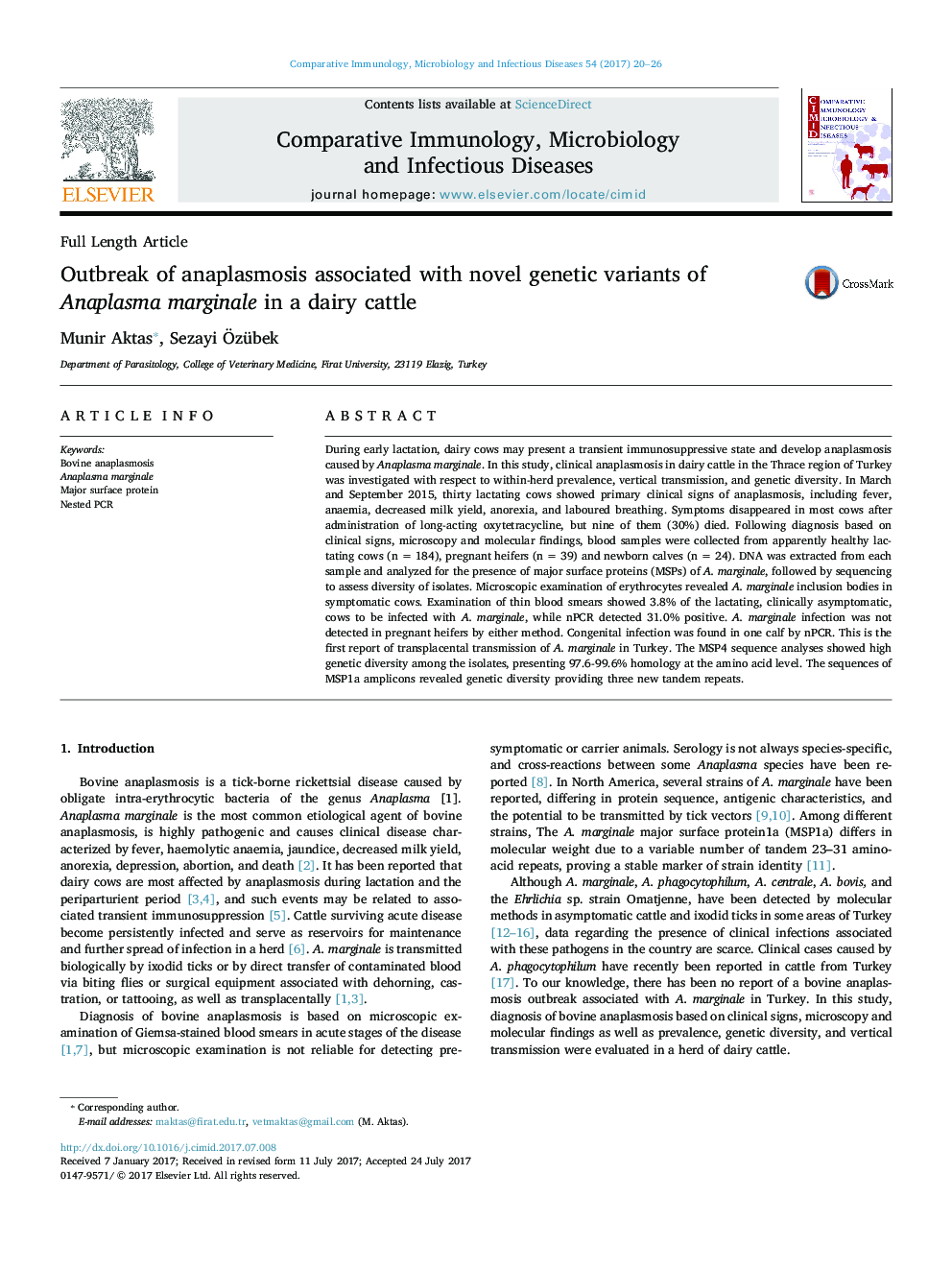| Article ID | Journal | Published Year | Pages | File Type |
|---|---|---|---|---|
| 5539839 | Comparative Immunology, Microbiology and Infectious Diseases | 2017 | 7 Pages |
Abstract
During early lactation, dairy cows may present a transient immunosuppressive state and develop anaplasmosis caused by Anaplasma marginale. In this study, clinical anaplasmosis in dairy cattle in the Thrace region of Turkey was investigated with respect to within-herd prevalence, vertical transmission, and genetic diversity. In March and September 2015, thirty lactating cows showed primary clinical signs of anaplasmosis, including fever, anaemia, decreased milk yield, anorexia, and laboured breathing. Symptoms disappeared in most cows after administration of long-acting oxytetracycline, but nine of them (30%) died. Following diagnosis based on clinical signs, microscopy and molecular findings, blood samples were collected from apparently healthy lactating cows (n = 184), pregnant heifers (n = 39) and newborn calves (n = 24). DNA was extracted from each sample and analyzed for the presence of major surface proteins (MSPs) of A. marginale, followed by sequencing to assess diversity of isolates. Microscopic examination of erythrocytes revealed A. marginale inclusion bodies in symptomatic cows. Examination of thin blood smears showed 3.8% of the lactating, clinically asymptomatic, cows to be infected with A. marginale, while nPCR detected 31.0% positive. A. marginale infection was not detected in pregnant heifers by either method. Congenital infection was found in one calf by nPCR. This is the first report of transplacental transmission of A. marginale in Turkey. The MSP4 sequence analyses showed high genetic diversity among the isolates, presenting 97.6-99.6% homology at the amino acid level. The sequences of MSP1a amplicons revealed genetic diversity providing three new tandem repeats.
Related Topics
Life Sciences
Agricultural and Biological Sciences
Animal Science and Zoology
Authors
Munir Aktas, Sezayi Ãzübek,
